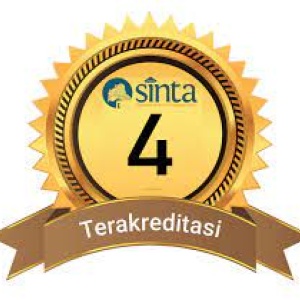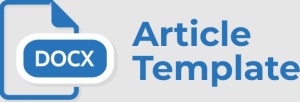Bentuk dan Fungsi Ilustrasi dalam Naskah-Naskah Kaghas Koleksi Peti 93 PNRI: Kajian Kodikologis
DOI:
https://doi.org/10.37014/jumantara.v14i1.3329Keywords:
Kaghas, Ulu Manuscript, Lampung Manuscript, Illustration, CodicologyAbstract
Illustrations can be found in a number of kaghas/bark manuscripts in box 93 of the National Library of the Republic of Indonesia. These are manuscripts 93 E 95, E 99, E 102, E 106, E 109, E 100, and E 956. These illustrations have various forms in each kaghas text. This study aims to explain the form and function of the illustrations of kaghas manuscripts in box number 93 of the National Library of the Republic of Indonesia). This research is codicological research and uses a qualitative descriptive method. The results obtained from the research are illustrations in kaghas manuscripts consisting of three forms, namely visual text forms, symbolic forms, and abstract forms. These illustrations have an aesthetical function as text visualization and decoration, a practical function as a calculation, and a magical function as a tattoo.References
Berg, B. L. Qualitative Research Methods for the Social Sciences. Boston: Pearson Education. 2004.
Collins, W. A. Besemah concepts, a study of the culture of the people of South Sumatra. University of California: Berkeley. 1979.
Djelantik, A.A.M. Estetika Sebuah Pengantar. Jakarta: Masyarakat Seni Pertunjukan Indonesia. 2008.
Gallop, Annabel dan Ben Arps. Golden Letters. Jakarta: Yayasan Obor. 2004.
Gozali, A. "Dimensi Spiritual Dalam Seni Lukis Abstrak Kontemporer Indonesia: Sejarah Dan Wacana." Acintya Jurnal Penelitian Seni Budaya 11, no. 1 (2019): 1-15.
Helfrich. Nadere Bijdragen tot de kennis van het Midden Maleisch (Basemahsch en Serawajsch Dialect). Den Haag: Martinus Nijhoff. 1933.
Misliani, L., & Idris, A. Wirid dan salawat sirrul hijaiyyah. Jakarta: Perpustakaan Nasional Republik Indonesia. 2020.
Mujahidin, A. "Analisis Simbolik Penggunaaaan Ayat-Ayat Al-Quran Sebagai Jimat Dalam Kehidupapan Masyarakat Ponorogo." Kalam 10, no. 1 (2016): 43-64.
Mu'jizah, M. "Naskah Betawi: Skriptorium dan Dekorasi Naskah." Patanjala 10, no. 2 (2018): 153-169.
Mulyadi, S. W. R. Kodikologi Melayu di Indonesia. Depok: Fakultas Sastra Universitas Indonesia. 1994.
Nugrah, R. S. "Makna Ilustrasi dalam Serat Dewa Ruci: Kajian Kodikologis." Jumantara: Jurnal Manuskrip Nusantara 7, no. 1 (2016): 129-149.
Pamungkas, B., Noupal, M., Murtiningsih, M., & Fitriyana, N. "Tradisi 'Rajah': Terapi Mistik Dalam Kepercayaan Masyarakat Suku Jawa di Kabupaten Ogan Komering Ulu Timur." Jurnal Studi Agama 6, no. 1 (2022): 12-28.
Raden, A. Z. M., & Andrijanto, M. S. "Hikayat Purasara: Komunikasi Visual Ilustrasi Wayang pada Naskah Sastra Betawi Abad ke-19." Manuskripta 7, no. 1 (2017): 141-168.
Sarwono, S. Juarian Beringin: Suntingan Naskah dan Tinjauan Bentuk. Depok: Universitas Indonesia. 1993.
Semiawan, C. R. Metode Penelitian Kualitatif. Grasindo. 2010.
Widyaningrum, R. A. Kajian Kutika Suku Bugis di Kalimantan Timur: Kajian FIlologi dan Gagasan Ekofenomenologi. Depok: Universitas Indonesia. 2020.
Yahya, F. Magic and divination in Malay illustrated manuscripts. Brill. 2015.
Zeegen, L. What is illustration?. Switzerland: RotoVision. 2009.
Downloads
Published
Issue
Section
License
Copyright (c) 2023 Jumantara: Jurnal Manuskrip Nusantara

This work is licensed under a Creative Commons Attribution-ShareAlike 4.0 International License.
- This statement is the author's commitment to respect copyright, both in terms of citing other people's work and utilizing journal content. If necessary, the author can send an Authenticity Statement of Article stating that "this work is the author's original idea and has never been sent to another publisher and published in any publication"
- The author retains copyright.
- The moral rights of publication belong to the author.
- Formal legal aspects in the use of journal publications refer to the Creative Commons Attribution-ShareAlike 4.0 (CC BY-SA) license, which means that journal content can be used freely for any purpose.









